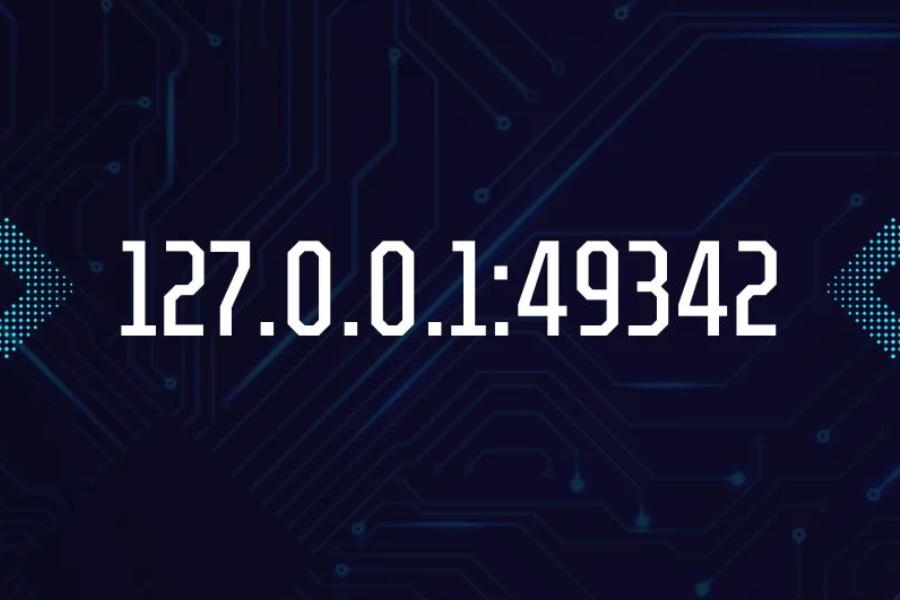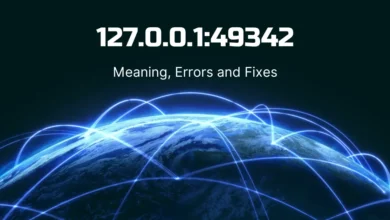When it comes to local servers, many people overlook the importance of securing their connections. The address 127.0.0.1:62893 may seem harmless, but just like any other server, it is vulnerable to a range of security threats. In an age where cyberattacks are becoming increasingly sophisticated, neglecting the security of your local server can lead to serious consequences.
Whether you’re running a personal project or developing software, understanding how to protect your local environment is crucial. It’s not just about keeping your data safe; it’s about ensuring that your work and creativity aren’t compromised by malicious activities.
So let’s dive into the world of 127.0.0.1:62893 and explore effective strategies for securing your local server from potential risks and vulnerabilities!
Understanding 127.0.0.1:62893
The address 127.0.0.1 is known as the localhost, a loopback interface that allows your computer to communicate with itself. It acts as a virtual server for testing and development purposes without external interference.
Port number 62893 designates a specific service or application running on that local server environment. Each port can host different applications, enabling multiple processes to operate simultaneously.
For developers, using this address means you can experiment safely without exposing sensitive data to the internet. Accessing 127.0.0.1:62893 means you’re tapping into an isolated space where you have complete control over what occurs.
Understanding how it functions helps in troubleshooting issues during development and ensures smoother operations when deploying actual services online later on. This knowledge forms the foundation of maintaining security while working within your local network ecosystem.
Risks and Vulnerabilities of Local Servers
Local servers, like 127.0.0.1:62893, can be a double-edged sword. While they offer convenience and speed for local development, they also harbor significant risks.
One major vulnerability is human error. Misconfigurations can lead to unauthorized access or data leaks that compromise sensitive information.
Malware poses another threat. Even on a local server, if security measures are lax, malicious software could infiltrate your system without notice.
Moreover, reliance on outdated software increases susceptibility to attacks. Many vulnerabilities are patched through updates; neglecting these leaves your server exposed.
Physical security matters too. A local server sitting in an unprotected environment may fall prey to theft or tampering by intruders who gain physical access to the hardware.
Importance of Securing Your Local Server
Securing your local server is essential for maintaining the integrity of your data. Local servers, like 127.0.0.1:62893, often house sensitive information that could be exploited if left unprotected.
A compromised server can lead to data breaches and unauthorized access to critical applications. This not only affects personal privacy but can also damage brand reputation and trust with clients.
Moreover, local servers are frequently overlooked in security protocols compared to cloud-based systems. Many assume that because they are not exposed directly to the internet, risks are minimal.
However, cyber threats continue to evolve, making it vital for individuals and organizations alike to prioritize cybersecurity measures on their local servers. Ignoring these safeguards could result in significant repercussions down the line.
Best Practices for Securing 127.0.0.1:62893
Securing your local server at 127.0.0.1:62893 requires a proactive approach. Always start by implementing strong passwords for all accounts associated with the server. Avoid default credentials, as they are easy targets.
Next, consider limiting access to only trusted users and devices. Use IP whitelisting to block unauthorized connections effectively.
Keep an eye on network traffic using monitoring tools that can alert you to suspicious activity in real time.
For added security, isolate your local server from external networks whenever possible. This minimizes exposure to potential threats lurking on the internet.
Engage in regular security audits of your configurations and policies. An ongoing assessment helps identify vulnerabilities before they can be exploited.
Using Firewalls and Encryption
Firewalls serve as a crucial barrier between your local server and potential threats. They monitor incoming and outgoing traffic, allowing only authorized connections. By configuring your firewall properly, you can block unwanted access to 127.0.0.1:62893.
Encryption adds another layer of security that should be noticed. When data is encrypted, it becomes unreadable to anyone who doesn’t have the decryption key. This means even if someone manages to intercept your data transmissions, they won’t be able to make sense of them.
Using firewalls and encryption creates a robust defense strategy for securing sensitive information on your local server. Always update these tools with the latest settings and protocols for maximum effectiveness against emerging threats.
Regular Software Updates and Backups
Regular software updates are crucial for maintaining the security of your local server at 127.0.0.1:62893. These updates often patch vulnerabilities that hackers exploit. By keeping your system up-to-date, you minimize potential threats.
Backups play a vital role as well. They serve as a safety net in case of data loss or corruption due to an attack or hardware failure. Schedule automatic backups to ensure your data is consistently saved without manual intervention.
Don’t forget about testing those backups periodically! Knowing they work when needed can save you a lot of stress later on.
Make it a routine to check for software updates and backup integrity at least once a month. This habit enhances security and ensures the smooth operation of your server, reducing downtime and frustration over time.
Additional Security Measures to Consider
When securing your local server at 127.0.0.1:62893, consider implementing multi-factor authentication (MFA). This adds an extra layer of security beyond just passwords.
Another effective measure is to limit user access based on roles. Ensure that only authorized personnel can reach sensitive areas of your server.
Regularly conduct security audits and vulnerability assessments to identify weaknesses in your setup. This proactive approach helps you stay ahead of potential threats.
Also, be cautious with software installations and plugins. Only use trusted sources to minimize the risk of malicious code infiltrating your system.
Educate yourself and your team about phishing scams and social engineering tactics. Awareness can significantly reduce the chances of falling victim to these attacks.
Conclusion
Securing your local server at 127.0.0.1:62893 is a crucial step in protecting your data and maintaining the integrity of your applications. You can create a robust security framework by understanding its unique role, recognizing potential risks, and implementing best practices such as firewalls, encryption, regular updates, and backups.
Moreover, considering additional measures like intrusion detection systems or access controls can further fortify your setup. The effort to secure this local environment pays off by preventing unauthorized access and ensuring smoother operations.
Prioritize these strategies for a safer digital workspace that enhances productivity while keeping vulnerabilities at bay. Taking action today will lead to more secure computing tomorrow.




